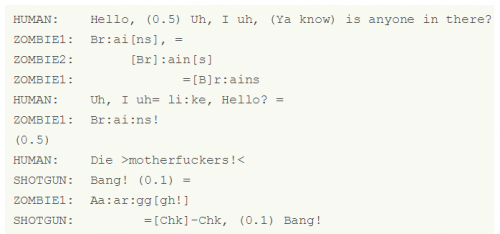Almost all of the representations of breasts we encounter in the mass media are filtered through the hypothetical heterosexual male gaze. Breasts are objects, things that people desire. Women’s personal, subjective experiences of having breasts is almost never discussed in pop culture. I mean, yes, occasionally two female characters might talk about their breasts, but usually in reference to whether and how they do or fail to attract male attention (e.g., “Is this too much cleavage?” and “I wish I had more cleavage!”). What it feels like to have breasts outside of the context of being a sex object isn’t talked about. There’s a void, a black hole of experience.
The only other common discourse about breasts that comes to mind centers around breastfeeding. In that discourse, the idea that breasts are for men is challenged, but only in favor of the idea that breasts are for babies. In neither discursive context does anyone make the case that breasts are primarily for the people who have them. That the pleasure (and pain) and comfort (and discomfort) that comes with breasts belongs — first and foremost — to female-bodied people.
Last week, I saw something different. Crazy Ex-Girlfriend is an odd little TV show with a couple musical numbers in each episode and one of the numbers last week was called “Heavy Boobs.” It’s safe for work but… maybe not safe for work.
Rachel Bloom‘s song names and describes one subjective experience of breasts. Breasts are “heavy boobs,” she sings, just “sacks of yellow fat” that can weigh on women. In the song, the breast-haver’s experience is centered to the exclusion of what men or babies might want or think or experience. I can’t ever remember seeing that on TV before.
And that’s plenty, but what she and her fellow dancers do with their bodies is even more extraordinary. They defy the rules of sexiness. Their movements are about embodying heavy boobs and that’s it. It’s as if they don’t care one iota about whether a hypothetical heterosexual male will see them. The dance is unapologetically unsexy. No, it’s more than unsexy; it’s asexy. It’s danced neither to repulse or attract men; instead, it’s danced as if sexiness is entirely and completely irrelevant. There’s no male gaze because, in that two minutes, there’s not a man in sight.
Lisa Wade, PhD is an Associate Professor at Tulane University. She is the author of American Hookup, a book about college sexual culture; a textbook about gender; and a forthcoming introductory text: Terrible Magnificent Sociology. You can follow her on Twitter and Instagram.









